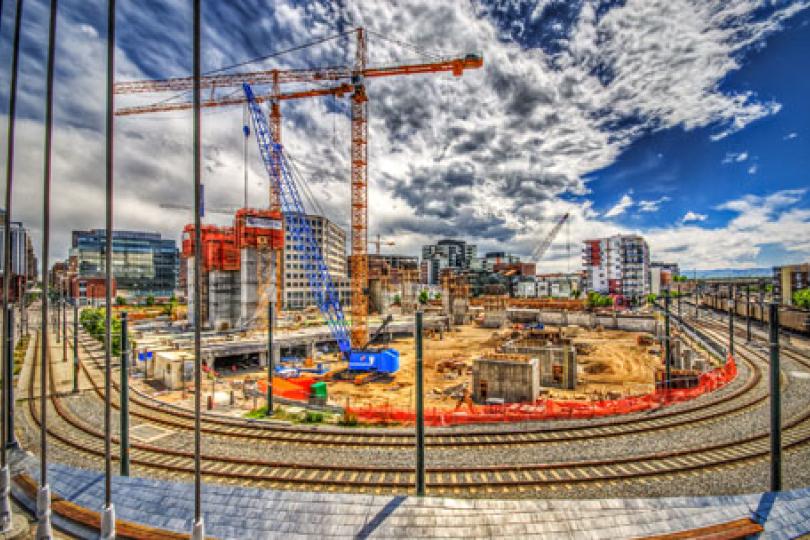Colorado's wild places: Deer today, gone tomorrow?
Editor's note: The following opinion piece by Fellow Sarah Reed first appeared in The Denver Post.
In my lifetime, Colorado’s population has doubled. It has quadrupled since my parents were born and it has increased by 10 times since my great-great-grandmother arrived as a homesteader in 1895.
Building the housing needed for that growing population has converted millions of acres of wildlife habitat, agricultural lands and open spaces. The land area consumed by residential development has grown three times faster than the state’s population, and today it covers more than half (56 percent) of Colorado’s private lands.
These changes have happened so fast that it’s easy to forget what the landscape looked like before it was covered by suburban neighborhoods, highways and shopping malls. As Coloradans, we value our open spaces for the scenic beauty and recreational opportunities that they provide. These open spaces also provide food, shelter and other resources for the millions of other inhabitants of Colorado: our wildlife.
As a conservation scientist, I study the effects of land development and human activities on wildlife, and I look for ways to improve land use and land management policies to conserve wildlife habitats as the human population grows.
In a recent study that I conducted with biologists at Colorado Parks and Wildlife, we found that increasing residential development was the most important factor associated with declining mule deer populations across western Colorado. Specifically, as nearly 2.5 million acres of deer habitat was converted to housing between 1980 and 2010, the number of fawns per adult female deer declined by 23 percent. We found that expanding energy development was also associated with decreases, especially in critical winter ranges for deer.
Mule deer are an iconic species in the American West, with tremendous economic, recreational and ecological value. Mule deer populations have been dropping rapidly in several states, leading to substantial concerns for management. Although a 1999 report to the Colorado legislature speculated that habitat loss and degradation was the most likely cause, our study was the first to demonstrate empirically that long-term, broad-scale land-use change due to residential and energy development is implicated in those declines.
In the United States, the authority to regulate land use and development occurs at the local level — by cities, towns or counties. However, several Western states have adopted measures that exempt subdivision of large parcels from that regulation. In Colorado, if a landowner wishes to subdivide a parcel of land into lots that are 35 acres or larger, then she is exempted from review by the local municipality.
Wyoming also exempts subdivisions of parcels that are 35 acres or larger, and Montana exempts subdivisions of 160 acres. When these exemptions were adopted in the early 1970s, lawmakers couldn’t have imagined how many people would want to live in exurbia, or how quickly transportation infrastructure and communications technologies would improve to allow them to build homes tens or hundreds of miles from the nearest city or airport.
However, the unintended consequence of these policies has been the widespread conversion of rural lands into low-density housing — exactly the type of rural housing that is negatively affecting mule deer across the western U.S.
Colorado’s population will continue to grow — the state is expected to add another 2.3 million people in the next 25 years — and we will need more houses. The best way to ensure that we protect our natural heritage is to be thoughtful about where we build those houses. A key change that is needed is removing the state-level subdivision exemptions and making sure that all new development is subject to the same amount of local review.
In addition to conserving wildlife habitats, giving local communities more authority over rural development will help them maintain adequate infrastructure and services, including roads, water and sewer lines, schools, and emergency services.
Even better, we should provide our local communities with the resources they need — including information about where important wildlife habitats are located, and planning tools and technical assistance to protect those habitats — to achieve a reasonable balance between conservation and development. These steps will help to ensure that Colorado’s open spaces will remain intact for many generations of people and wildlife to come.

